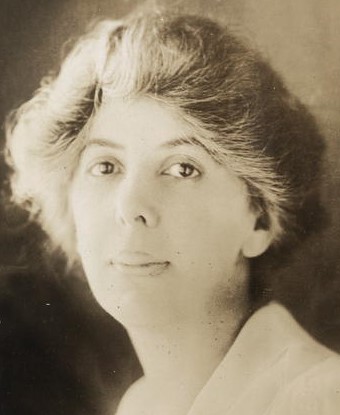Last updated: April 23, 2022
Person
Nina Allender

Harris & Ewing, National Woman's Party Collection, Library of Congress ca 1913
"Political cartooning gives you a sense of power that nothing else does."
Nina Allender was a feminist, a suffragist, and an artist. She had a shrewd sense of humor and an innovative perspective on women. Her drawings changed the course of one of the most important civil rights movements in the history of the United States.
Born Nina Evans in Auburn, Kansas in 1872, Allender spent her early years in Washington, D.C. studying painting at the Corcoran School of Art and the Pennsylvania Academy of Fine Arts. In early 1913, Allender received a visit from Alice Paul, founder of the Congressional Union for Woman Suffrage and the National Woman's Party, asking her to contribute money and time to the suffrage cause.
From 1914 until her final cartoon appeared in 1927, Nina Allender contributed over 150 cartoons to the woman suffrage campaign. The drawings were primarily created for The Suffragist, the weekly publication of the Congressional Union and National Woman's Party from 1913 until 1921, and later it successor Equal Rights, published from 1923 until 1954. The National Woman's Party was the only suffrage organization with an "official cartoonist."
Allender's work altered public opinion. Her drawings presented the suffragists as political, powerful, and in control--an innovative approach to drawing women. Women were shown with their hands on their hips, standing proudly above the crowd, unafraid of the repercussions of their new public persona. As the NWP began the strategy in 1917 of picketing the White House, Allender's cartoons depicted the demonstrators as elegant, reasonable, and ladylike to counter critics who accused the women of being transgressive and treasonous. When picketers faced violence from angry mobs, Allender's cartoons showed the women steadfastly holding their banners high while being attacked. Allender's cartoons reflected the new spirit of the suffrage movement, with women who demanded the vote first and now. These were women who would not back down from their end goal: a constitutional amendment ensuring that the right to vote could not be denied or abridged based on sex. Her cartoons were visual headlines that captured the news of the week and the spirit of the cause.
But Nina Allender's work also perpetuated harmful myths about the suffrage movement. The Allender Girl she drew was young, white, and privileged. Working-class women are depicted as the "inspiration of the suffrage workers," but women who fought for their rights in the workplace were important drivers of the fight for the vote, not just the beneficiaries. Even more significant is the complete erasure of Black, Indigenous, Latina, Asian and other women of color in the suffrage movement. In Nina Allender's cartoons, all the suffragists are white.
In addition to cartooning, Nina Allender participated in field campaigns to win support for woman suffrage. After the passage of the Nineteenth Amendment, she remained an active member of the National Woman's Party, working for passage of the Equal Rights Amendment.
Allender is considered one of the most significant political artists of the woman suffrage era, capturing the spirited struggle for women’s rights as it happened and providing a unique window into this intense chapter in women’s history. Allender gave the majority of the cartoons she drew during this time to the National Woman’s Party. But for decades, her original works were tucked away in a closet in an unlabeled box. They were discovered in 2001 and were displayed in the museum of the Sewall-Belmont House, which became the Belmont-Paul Women's Equality National Monument in 2016. In 2020, the collection was transferred to the Library of Congress.
Text adapted from the National Woman's Party museum exhibit.
Other sources include: Biographical Sketch of Nina Allender, written by Ashley Nicole Owens and Miranda Pikaart. Included in Online Biographical Dictionary of Militant Woman Suffragists, 1913-1920, Database assembled and co-edited by Thomas Dublin and Kathryn Sklar. Biographical sketches have been crowdsourced. (Alexandria, VA: Alexander Street Press, 2015); "Propagandist: Nina Allender" (1872-1957), essay in Women of Protest: Photographs from the Records of the National Woman's Party, Library of Congress.
